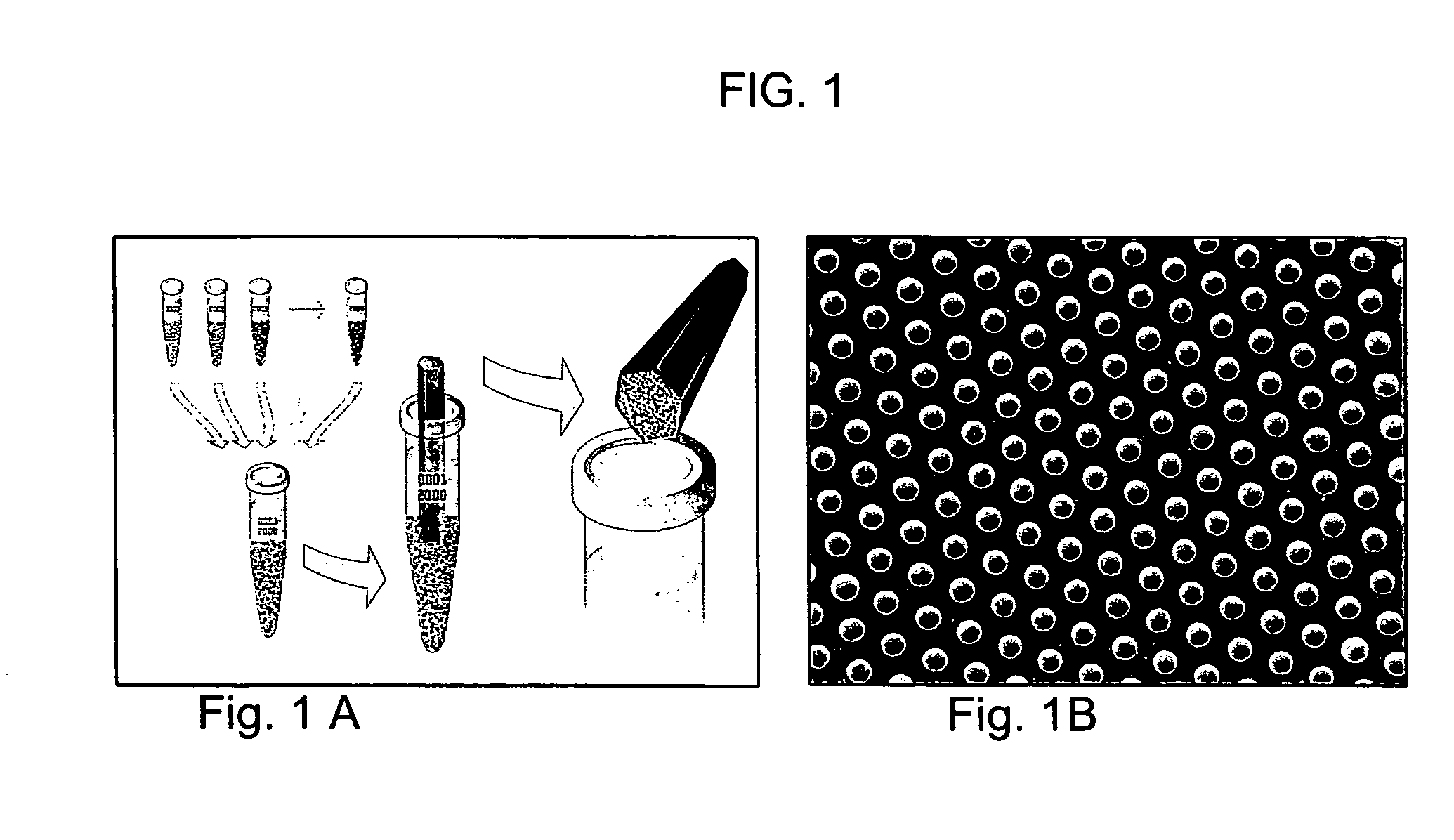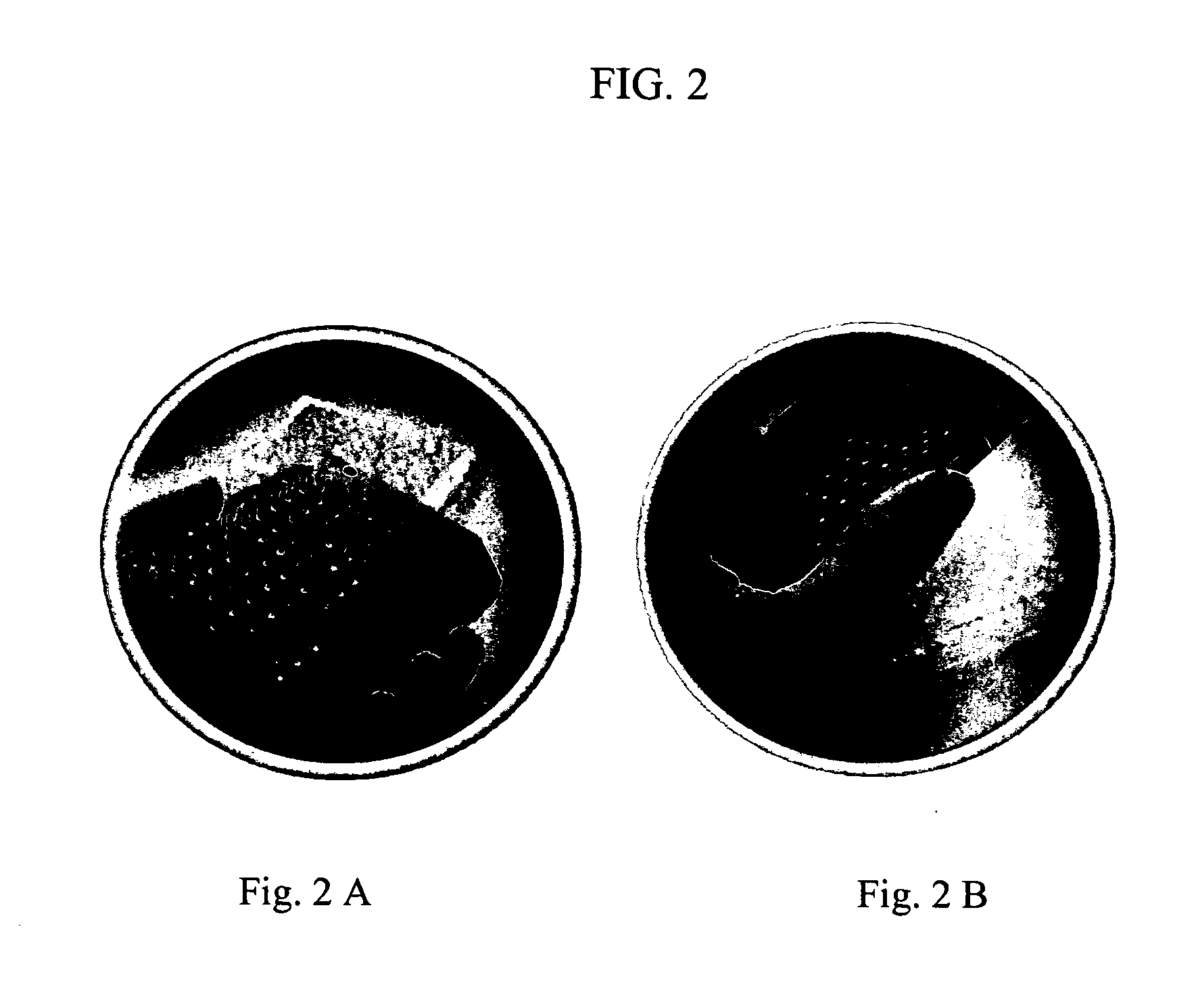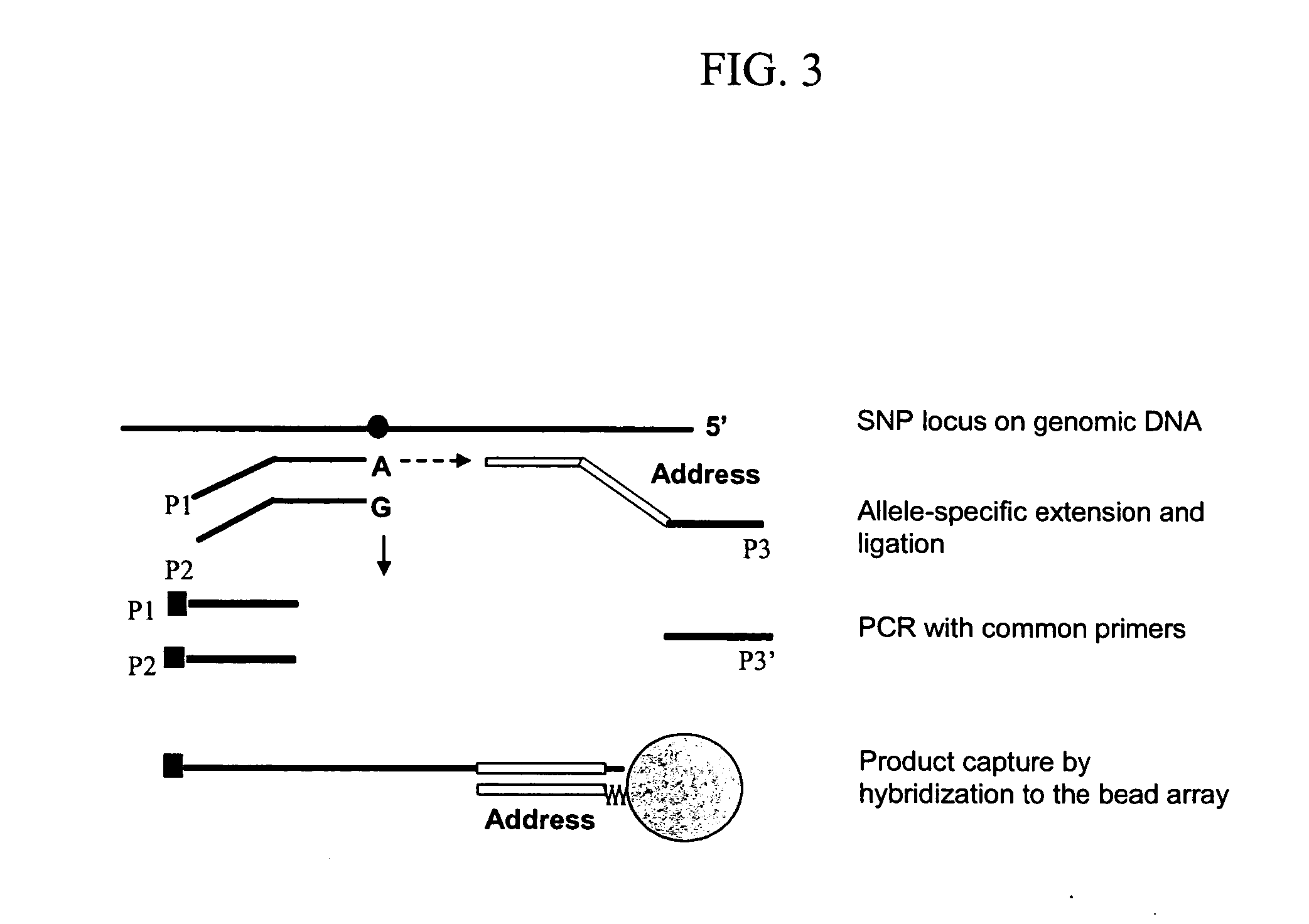Methods and compositions for diagnosing lung cancer with specific DNA methylation patterns
- Summary
- Abstract
- Description
- Claims
- Application Information
AI Technical Summary
Benefits of technology
Problems solved by technology
Method used
Image
Examples
example i
Design of Target Nucleic Acid Probes
[0117] This Example shows design of target nucleic acid probes for detection of genomic loci.
[0118] First, a human gene promoter database was prepared that includes all CpG regions of potential interest for methylation profiling. A fully automated SNP genotyping assay design program was adapted for methylation application and CpG islands of interest are selected and “converted by bisulfite” computationally. For each CpG locus, three probes are designed: two allele-specific oligonucleotides, one corresponding to the methylated, and the other to the unmethylated state of the CpG site and one locus-specific oligo (FIG. 4). If other CpG loci are present in the close vicinity of the chosen CpG site, a wobble base [A or G] is used for the corresponding probe position. Assays for more than 60 CpG sites from 20 different genes were designed, mostly selected from the methylation database on the world-wide-web at methdb.de. Approximately half of the sites...
example ii
Development of Internal Controls and Confirmation of Completeness of Bisulfite Conversion
[0119] This example shows the development of internal controls that allow optimization of protocols, determination of assay specificity, troubleshooting, and evaluation of overall assay performance.
[0120] Plasmids pUC19, pACYC184 and phage phiX174 were selected to serve as control DNAs. These DNAs can be spiked into the genomic DNA assays to provide internal controls, and would not interfere with human genomic DNA reactions. It is easy to prepare completely unmethylated plasmid DNAs and then methylate them in vitro using Sss I (CpG) methylase to produce substrates with known methylation status. Plasmids can be methylated virtually to completion. The quality of in vitro methylation was tested by restriction enzyme digestion of unmethylated and methylated DNAs using the methylation sensitive enzyme Hpa II and its isoschisomer Msp I, which is not sensitive to methylation. It was not possible to d...
example iii
Integration of Microtiter Plate Based, High-Throughput Bisulfite Conversion into Genotyping System for High Troughput Methylation Profiling
[0131] This example demonstrates the integration of a microtiter plate based, high throughput bisulfite conversion as described in Example II, into the SNP genotyping system for high-throughput methylation profiling.
[0132] The assay optimization process includes measuring the array-to-array experimental variability, both within a matrix and between matrices, and dissect out contributions to variability from samples, sample processing (bisulfite conversion, allele-specific extension, ligation, and PCR amplification), and array hybridization, using carefully designed controls. The resulting data also is useful in determining thresholds of significance for analyzing and interpreting results.
Improve Assay Performance with fully “Methylated” and “Un-Methylated” Genomic Templates
[0133] Currently, all the methods used to validate methylation status...
PUM
 Login to View More
Login to View More Abstract
Description
Claims
Application Information
 Login to View More
Login to View More - Generate Ideas
- Intellectual Property
- Life Sciences
- Materials
- Tech Scout
- Unparalleled Data Quality
- Higher Quality Content
- 60% Fewer Hallucinations
Browse by: Latest US Patents, China's latest patents, Technical Efficacy Thesaurus, Application Domain, Technology Topic, Popular Technical Reports.
© 2025 PatSnap. All rights reserved.Legal|Privacy policy|Modern Slavery Act Transparency Statement|Sitemap|About US| Contact US: help@patsnap.com



